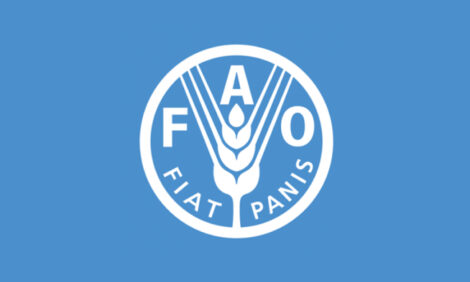



OIE Rallies Countries To Combat Rift Valley Fever in Africa and Middle East
EGYPT - A World Organisation for Animal Health (OIE) high level workshop on Rift Valley Fever (RVF) was organised by the OIE Regional Representation for the Middle East and the OIE Regional Representation for Africa with the support of the Food and Agriculture Organisation (FAO) and the Inter African Bureau for Animal Resources of the African Union (AU-IBAR) from June 13 th to 15 th 2007 in Cairo, Egypt.
It gathered countries from the Greater Horn of Africa traditionally affected by the disease, neighbouring countries susceptible of infection and also countries of the Middle East importing millions of heads of live cattle from this part of Africa . Nine countries from Africa and eight from the Middle-East were represented at governmental level.
RVF is an acute viral disease that can cause severe disease in humans and in domestic animals (such as goats, sheep and cattle). The disease can be controlled via vaccination of animals.
A new harmonised official certification on the health and safety of exported ruminants and ruminant products
Participants agreed on a harmonised regional certification on the health and safety of exported ruminants and ruminant products that will help countries maintain acceptable levels of trade in face of outbreaks of RVF. This certification must be done under the responsibility of governments, according to the Sanitary and Phytosanitary (SPS) and the OIE international standards.
“The occurrence of RVF is closely related to climate change and the spread of the disease through mosquitoes is more likely to occur in instances of heavy rains and flooding. The impact RVF has on livestock and consequent trade restrictions is a heavy burden for poor farmers that we can alleviate on a bigger scale thanks to this regional certification system,” said Dr Ghazi Yehia, the OIE Regional Representative for the Middle East at the workshop.
Export of millions of heads of live animals from Africa to the Middle East is crucial for the livelihood of hundred of thousands of poor farmers in Africa while - on the other hand - it is important for the fresh meat supply of the populations in the Middle East. Without detailed sanitary certificates endorsed by the OIE to ensure the safety of these exchanges, the trade would be interrupted and poverty would increase drastically in several countries (including Somalia where the civil war could be worsen by stopping exports).
African and Middle East countries also agreed that in applying the OIE's standards, guidelines and recommendations on disease surveillance, prevention and control measures, including the use of appropriate serological tests and vaccines, the disease could be better controlled in the infected countries.
Supporting countries for predicting future occurrences and responding appropriately
On the other hand, the OIE will consider convening a meeting of veterinary and public health experts to develop more detailed and appropriate surveillance guidelines for diseases that are spread by insects including RVF. The group of experts will also take into account issues related to climate change and global warming that might have an effect on the spread of vector-borne diseases across the globe.
The transparent notification of outbreaks has again been stressed during the workshop as being vital for a country and its neighbours to properly respond.
“Critically, veterinary and public health authorities will have to tighten collaboration in monitoring the disease and responding to outbreaks. RFV is often diagnosed in humans before clinical signs occur in animals,” explained Dr Mamadou Samba Sidibe, the OIE Regional Representative for Africa .
Partner international organisations such as the FAO and donors will also provide training and technical assistance, especially in the field of diagnosis vaccination and predictive epidemiology.
During the latest outbreak that started in early December 2006 RVF affected thousands of animals (bovine, sheep, goats and camels) in Kenya, Tanzania and Somalia .
In Tanzania , Kenya and Somalia 1062 human cases occurred of which, 325 deaths were recorded to date (World Health Organization data).
RVF background information
RVF is mainly found in countries of sub-Saharan Africa and in Madagascar .
Many different species of mosquitoes are vectors for the RVF virus and RVF is most commonly encountered during years of unusually heavy rainfall and subsequent flourishing of mosquito populations.
Humans are highly susceptible to the RVF virus and may become infected either by being bitten by mosquitoes infected by sick animals, through contact with the blood, other body fluids or tissues of infected animals. Humans working in slaughter facilities, laboratories or hospitals are at risk of acquiring infections.
It is not to be excluded that the disease will further spread around the globe due to climate change and globalisation.
TheCattleSite News Desk


